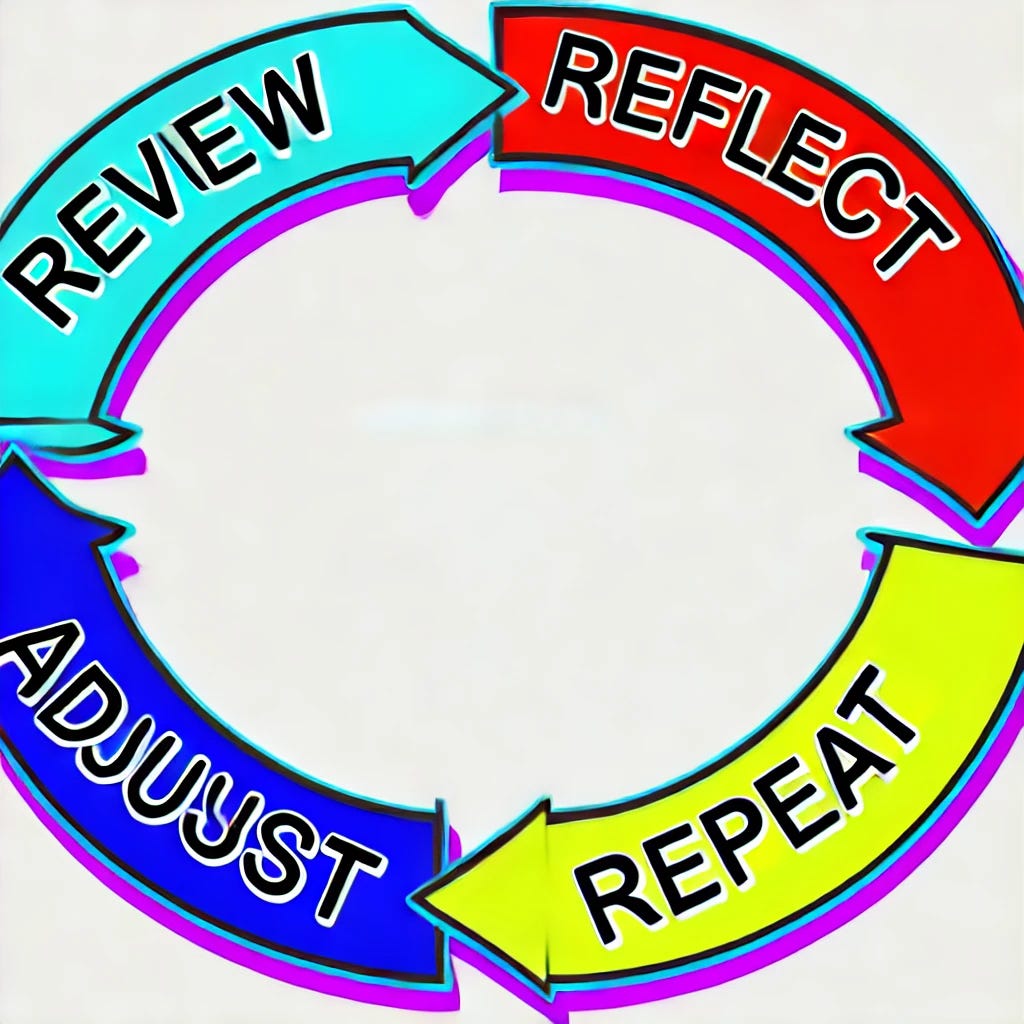1. The Key to Better Decisions.
What is the most useful thing you can do to improve any decision?
Answer: Get good feedback. Feedback from peers, experts, or real-world testing gives you the critical insights to refine your decision and adapt as new information comes in. Without it, you risk missing opportunities and failing to see potential pitfalls.
Feedback Provides Real-World Data. Piloting an option by running small experiments lets you gather concrete information about how your choices play out in the real world. This data surfaces blind spots that were invisible earlier.
Different Angles Unlock New Approaches. Get input from peers or experts to spot different angles, challenges, or solutions you might not have considered. Diverse feedback broadens your understanding and can offer ideas that strengthen your decision. Involve the stakeholders.
Feedback Enables Continuous Adjustment. Adapt in real-time by making small adjustments based on feedback. This keeps you on course and increases the likelihood of a successful outcome, avoiding the risk of waiting too long to correct.
2. Bring in Fresh Eyes
Get feedback by having stakeholders, peers, or experts review your plans. This helps reveal risks, alternative strategies, or ideas you might have overlooked, increasing your odds of a better result.
Get Real, Run Pilot Tests. Test likely options on a small scale, if possible. Pilot tests provide real-world data, allowing you to adjust before fully committing and avoid major pitfalls.
3. Think Through the Pitfalls
Ask “What could make this the wrong choice?” Considering potential failures helps you plan for them, strengthening your overall approach.
What Could Go Wrong? Identifying possible failure points allows you to build in contingencies and avoid problems before they become problems. By acknowledging risks upfront, you prepare for them instead of being blindsided.
What Has to Be True? For this option to remain the best choice, what conditions must continue to hold? Identifying these factors helps you monitor and adapt if they change.
The Role of Resilience: Adapting to New Information
"The best way to plan is to make very short plans, with a lot of optionality, and always keep many ways out." — Nassim Nicholas Taleb.
Build flexibility into your decisions so you can adapt when circumstances change. Resilient plans allow you to respond quickly without losing sight of your goals.
4. Set Your Course Markers
Define success and failure criteria. Establish what success looks like and, just as importantly, what signals failure. Clear criteria help you know when to stay the course, make adjustments, or pivot completely.
Set Triggers for Review and Change. Identify the key moments or conditions that signal it’s time to reevaluate your decision. Setting triggers ensures you remain proactive rather than reactive.
5. Correct as You Go
Adjust like a guided missile. Just as a guided missile changes course to stay on target, make adjustments based on the feedback you receive. Flexibility is key to staying aligned with your goals.
Make Mid-Course Corrections. Feedback allows you to adapt on the fly. Whether it’s tweaking small details or making larger changes, staying flexible ensures your decision remains on track as circumstances evolve
.
Be Open to Changing Your Mind. As you gather new information, it’s smart to change your mind if the situation warrants it.
"When the facts change, I change my mind. What do you do, sir?"
- John Maynard Keynes
6. The Feedback Loop: Keep Improving
Use feedback to create a cycle of improvement. Continuous feedback—whether from real-world results or others’ perspectives—ensures you’re always refining your approach and learning from each decision.
Review, Reflect, Adjust, Repeat. Every decision improves with review, reflection, and adjustment. This loop creates a pathway for ongoing improvement, helping you make more informed and adaptable choices in the future
.Feedback Drives Success. It lets you create a flexible approach that adapts to new information in every decision-making stage. This improves outcomes and reduces the risk of getting stuck in bad choices.
That’s My Perspective







